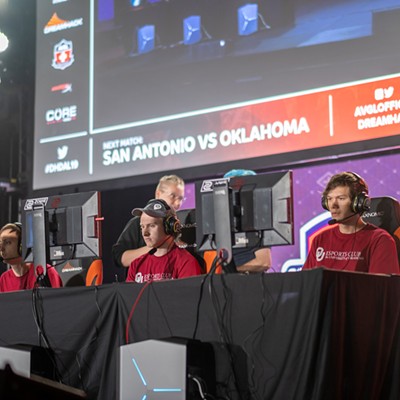House Bill 2850 is a measure to cut public funding for the Oklahoma Arts Council on what is phrased an “emergency basis.” The bill lays out a plan to defund the OAC and is cued for consideration when the Oklahoma Legislature convenes Feb. 3.
Bill author Rep. Dan Fisher proposes that OAC funding be cut by 25 percent each year until 2018.
Fisher did not return requests for comment by deadline.
Who most benefits from funding?
Approximately 400 programs are funded by the Oklahoma Arts Council, and the effects of cutting funding for these programs do not stop with the programs themselves, said Jennifer James, director of Oklahomans for the Arts. Oklahomans for the Arts is a nonprofit advocacy group for public arts funding founded in 2011.
Cuts would hit hardest those who most need support.
Half of OAC funding supports art in rural areas; 80 percent of its total funding goes directly into communities via grants. Recipients include nonprofits; city, county and tribal governments; universities and public schools, according to OAC literature. Organizations like the Oklahoma City Philharmonic would incur dramatic cuts immediately, but that isn’t what most bothers Eddie Walker, executive director of the OKC Phil.
The OKC Phil receives part of its overall operating funding from the
Oklahoma Arts Council but doubts cuts would cripple his organization.
He,
too, said the greatest impact would be in “these rural communities, who
don’t have a corporate base, who have no programs are typically
supported completely by the OAC.”
Devoid of funding, Walker said, these smaller programs will likely cease altogether.
How arts funding grows communities
James cited Guthrie when asked what clear-cut impact publicly funded art programs can have.
The Pollard Theatre, a publicly funded community theater in Guthrie, serves as an anchor for its community.
World
touring band Mumford & Sons made its The Gentlemen of the Road
festival stop in Guthrie as one of only five U.S. tour dates last
summer. As a result, millions of dollars went into the community and
nearly all business in Guthrie saw a boost.
A
decade ago, James said, the festival would not have happened. Through
OAC funding, the sleepy city developed a reputation for its music and
theater, which, in turn, helped bring in tourism and festival dollars,
as well as build credibility for investors.
James said it wouldn’t have been possible without early and prolonged vision and funding.
“We have always enjoyed support from the Oklahoma State Legislature,” she said.
Cost/benefit analysis
Many art advocates question why arts funding is a target of spending cut proposals.
“We
are talking about budgets that are less than 1 percent where the
returns are clear,” said Jonathan Fowler, vice president at Fowler
Holding Company and a passionate supporter of the arts.
He
and his family support and work with projects from the Norman Arts
Council to OKC’s Plaza District and Tulsa’s Blue Dome District.
In
2008, Oklahoma City University conducted an economic impact study, The
Economic Impact of Nonprofit Arts and Culture Organizations in Oklahoma,
to determine the overall benefit of art and art education at the
community level. The results showed that revenue generated by
communitysupported art programs earned revenue above what was spent to
fund them.
James said
she believes HB 2850 was proposed not out of any malicious intent but
out of ignorance of the proven value of art and arts programs.
“I would challenge any legislator to take a good, long look [at these programs]. They would be surprised,” she said.
For more information
Find your legislator at oklegislature. gov/FindMyLegislature.aspx.
Visit Oklahomans for the Arts at oklahomansforthearts.org.
View HB2850 here: http://goo. gl/2gpOsV.
View The Economic Impact of Nonprofit Arts and Culture Organizations in Oklahoma at goo.gl/SP0MBU.











